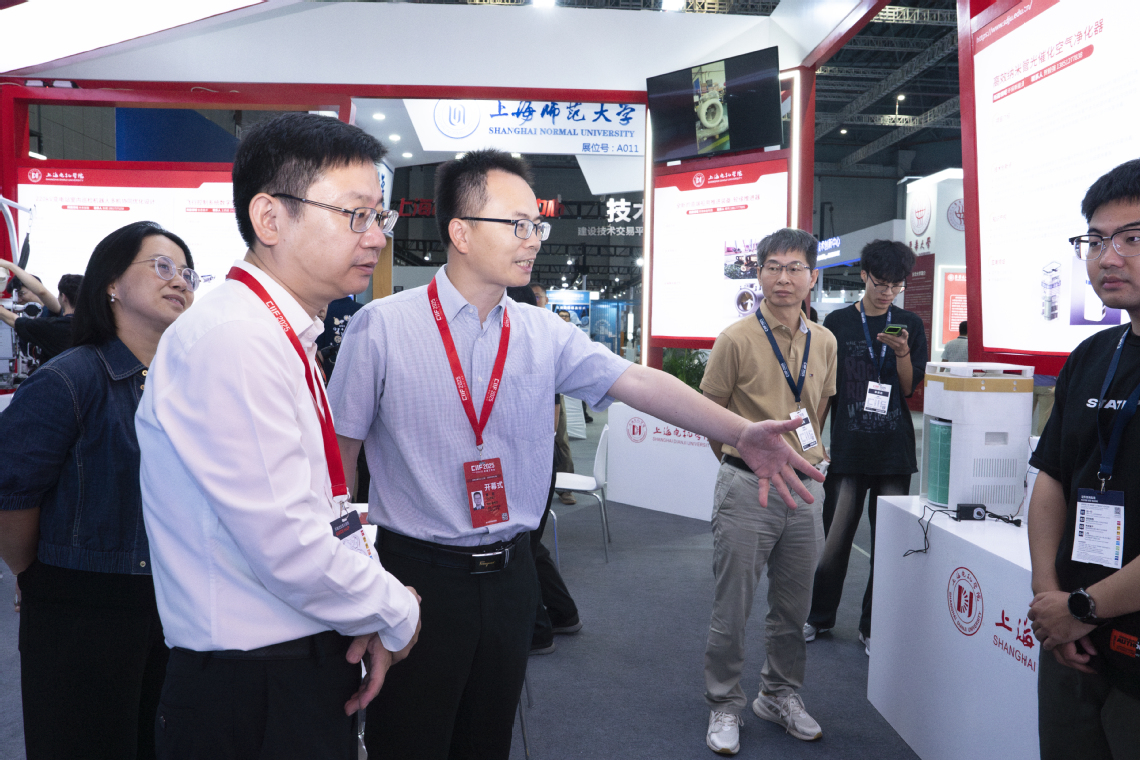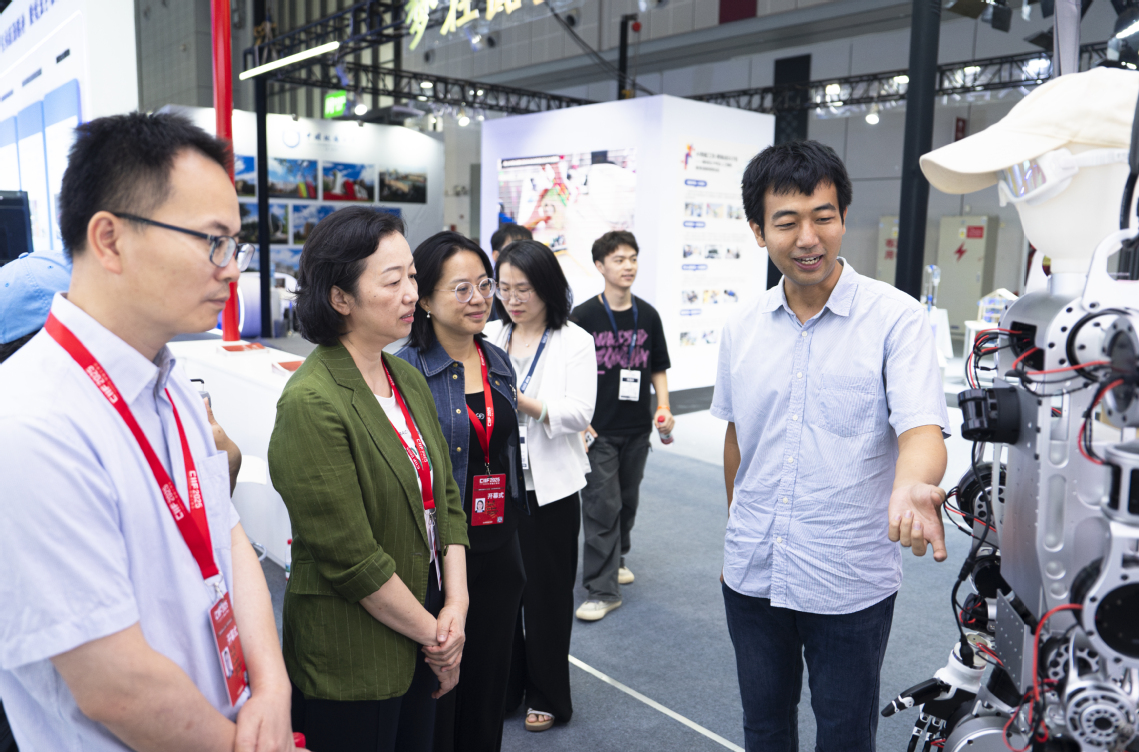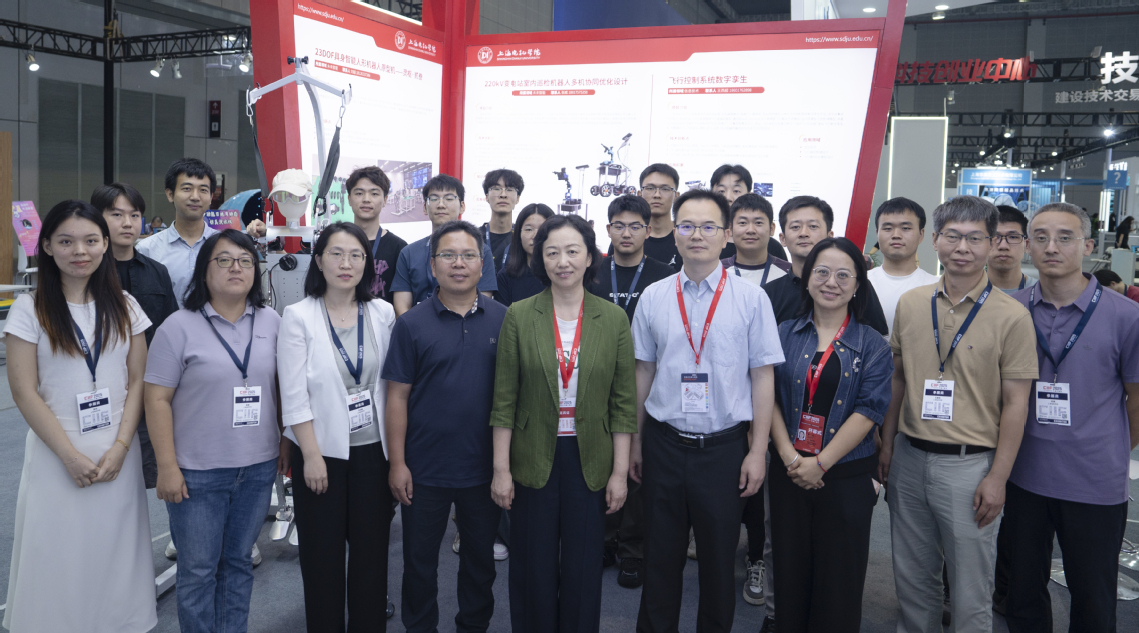The 25th China International Industry Fair (CIIF) opened grandly on Sep. 23 at NECC (Shanghai) National Exhibition and Convention Center under the theme New Industrialization &Smart Manufacturing Resilience. Focusing on core technologies and cutting-edge trends in new industrialization, CIIF 2025 attracted a stellar lineup of leading enterprises, universities, and research institutions. Our university presented eight sci-tech achievements in the higher education zone.

During the fair, Luan Zongtao, Deputy Director of Shanghai Municipal Education Commission, visited our university exhibits. He listened to introductions, viewed demos with keen interest, and engaged in in-depth exchanges with researchers regarding tech innovation, application prospects, and industrialization progress. Deputy Director Luan praised our university for its series of sci-tech innovations aligned with industrial needs, and encouraged further efforts to deepen industry-university-research collaboration, accelerate tech transfer, and contribute more SDJU Wisdom and SDJU Solutions.

SDJU President Gong Siyi and Vice President Yang Junjie also visited the booth, gaining details of each display and their progress. They emphasized using CIIF as a platform to fully demonstrate SDJU’s research strength, expand cooperation channels with enterprises, promote the deep integration of innovation chain, industrial chain, and talent chain, aiming to continuously enhance SDJU’s social service capability and influence.
The eight exhibited achievements each demonstrated distinctive features, reflecting both breakthroughs in frontier technologies and a practical orientation toward serving industrial needs.

In the field of high-end equipment manufacturing, the Reflective Full-Spectrum Film Thickness Gauge from Professor Li Zhisong’s team in School of Mechanical Engineering addressed long-standing challenges of accuracy and efficiency in wafer thin-film inspection with its nanometer-level precision and non-contact rapid measurement. The Manufacturing Technology of Thermoplastic Composite Structures for Marine-Environment Aircraft from Professor Wang Zhenjun’s team in the School of Aeronautics (SA) tackled harsh challenges posed by oceanic conditions. The team’s self-developed continuous carbon fiber thermoplastic composites achieved over 30% weight reduction while demonstrating excellent corrosion resistance and impact performance, already applied in complex aircraft structural components.
In the field of future intelligence, the Multi-Robot Collaborative Optimization Design for 220kV Substation Indoor Inspection from Professor Zhang Wei’s team in School of Electrical Engineering(SEE) enables autonomous, collaborative, and efficient inspection in complex indoor environments, significantly enhancing the intelligence, safety, and reliability of power facility operations. The 23DOF Embodied Intelligent Humanoid Robot Prototype—Lingshu from Professor Liu Yue’s team in the School of Mechanical Engineering(SME) represents cutting-edge exploration in intelligent robotics. Its 23-degree freedom design demonstrates high flexibility and human-like motion capabilities, attracting considerable attention and sparking imagination about its application scenarios.
In information technology, the Low-Cost Millimeter-Wave Anti-Drone Radar from Professor Chen Zhimin’s team in School of Electronics and Information Engineering(SEIE) perfectly combines high performance with low cost, featuring an 8-km detection range, 35GHz operating frequency, and under 100W power consumption. With broad application prospects in low-altitude security and key site protection, it was recommended as a featured project for on-site demonstration. The Digital Twin for Flight Control Systems from SEE Professor Wang Xichao’s team creates an immersive virtual flight validation environment, integrating high-precision dynamic models and real-time visual interaction. It provides a safe, efficient, and low-cost tool for developing and testing flight control algorithms and conducting personnel training, directly serving the burgeoning low-altitude economy.
In the field of green and new energy, the High-Efficiency Nanotube Photocatalytic Air Purifier from SME Professor He Yiqiang’s team adopts a two-stage purification system, particularly a self-developed high-efficiency photocatalytic filter that efficiently degrades formaldehyde and VOCs and eliminates bacteria and viruses under visible light, offering an advanced technological solution for improving indoor air quality.
At CIIF2025, SDJU exhibits attracted numerous representatives from enterprises and investment, fostering extensive exchanges and laying a solid foundation for future industry-university-research collaboration and technology transfer.






